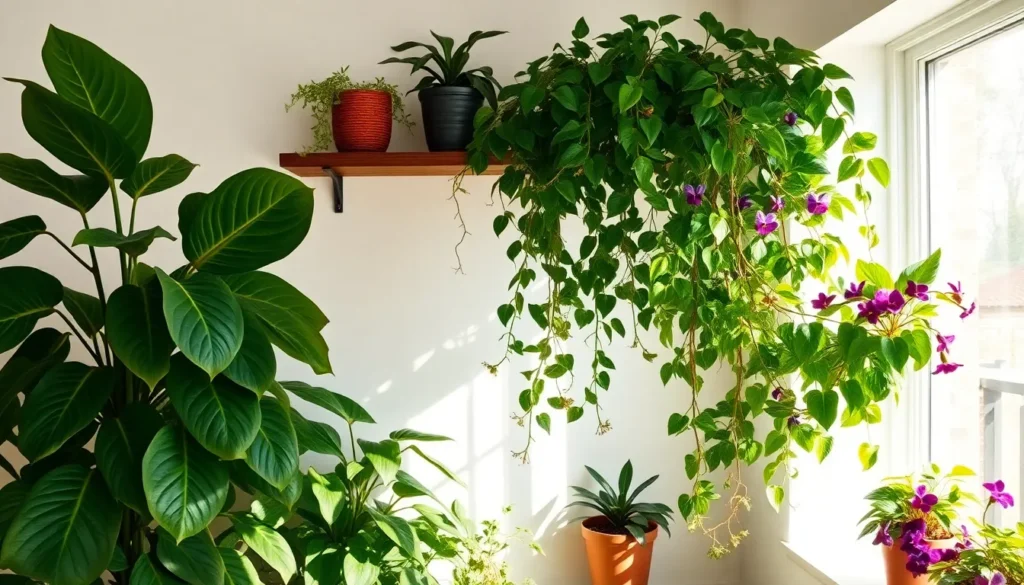We’ve all felt that instant mood boost when stepping into a room filled with lush green plants. There’s something magical about bringing nature indoors that transforms our living spaces from ordinary to extraordinary. Whether you’re a seasoned plant parent or just starting your indoor garden journey houseplants offer endless possibilities to enhance your home’s beauty and air quality.
From low-maintenance succulents that thrive on neglect to dramatic statement plants that command attention we’ll explore the diverse industry of indoor greenery. Each plant type brings its own personality and care requirements making it easier than ever to find the perfect match for your lifestyle and space.
Ready to discover which plants will flourish in your home? We’ll guide you through the most popular houseplant categories so you can make informed choices that’ll have your friends asking for your green-thumb secrets.
Low-Light House Plants That Thrive in Dim Conditions
Dark corners and poorly lit spaces don’t have to remain bare when you choose the right houseplants. We’ve selected these resilient varieties that flourish in minimal light conditions while adding natural beauty to your home.
Snake Plants (Sansevieria)
Snake plants stand tall as the ultimate low light champions for indoor gardening. These architectural beauties feature thick, upright leaves with striking yellow edges that create visual interest in any dim corner. We recommend placing them in offices, bathrooms, or hallways where natural light is scarce.
Watering becomes incredibly simple with snake plants since they prefer dry conditions between waterings. You’ll only need to water them every 2-3 weeks during growing season and even less frequently in winter months. Their drought tolerance makes them perfect for busy lifestyles or frequent travelers.
Air purification ranks among their top benefits as snake plants remove toxins like formaldehyde and benzene from indoor air. NASA’s Clean Air Study specifically recognized Sansevieria for its exceptional air cleaning capabilities during nighttime hours.
ZZ Plants (Zamioculcas zamiifolia)
ZZ plants earn their reputation as nearly indestructible houseplants that thrive in low light environments. Their glossy, dark green leaves reflect available light beautifully while requiring minimal care from plant parents. We often suggest these plants for beginners who want guaranteed success with their first indoor garden.
Watering requirements stay extremely low as ZZ plants store water in their thick stems and roots. You can water them once every 2-4 weeks depending on your home’s humidity levels and temperature. Overwatering poses more risk than underwatering with these drought adapted specimens.
Growth patterns remain steady but slow, making ZZ plants excellent long term investments for your indoor space. They’ll gradually develop new shoots from their base while maintaining their compact, upright form for years without becoming overgrown.
Pothos Varieties
Pothos varieties offer incredible versatility for low light spaces with their trailing vines and heart shaped leaves. Golden pothos, marble queen, and jade pothos each provide unique coloration patterns that brighten dim areas naturally. We love using them in hanging baskets, on shelves, or as climbing plants with moss poles.
Propagation becomes effortless with pothos since you can root cuttings directly in water or soil. Simply cut a 4-6 inch section with nodes and place it in a glass of water until roots develop. This easy multiplication method lets you expand your collection or share plants with friends.
Adaptability sets pothos apart from many other houseplants as they adjust to various light conditions gracefully. While they prefer bright, indirect light, they’ll continue growing in low light situations with slightly slower growth rates and less variegation in colored varieties.
Chinese Evergreens (Aglaonema)
Chinese evergreens showcase stunning foliage patterns that add tropical flair to low light indoor spaces. Their leaves display combinations of green, silver, pink, and red markings that create living artwork in dim corners. We particularly appreciate varieties like ‘Red Anjamani’ and ‘Silver Bay’ for their bold color contrasts.
Temperature preferences make Chinese evergreens ideal for indoor cultivation since they thrive in typical household temperatures between 65-75°F. They’ll tolerate cooler conditions but perform best when kept away from drafts and sudden temperature changes.
Humidity requirements stay moderate, though Chinese evergreens appreciate slightly higher moisture levels than desert plants. You can increase humidity by grouping plants together, using pebble trays, or running a humidifier nearby during dry winter months.
Bright-Light House Plants for Sunny Spaces
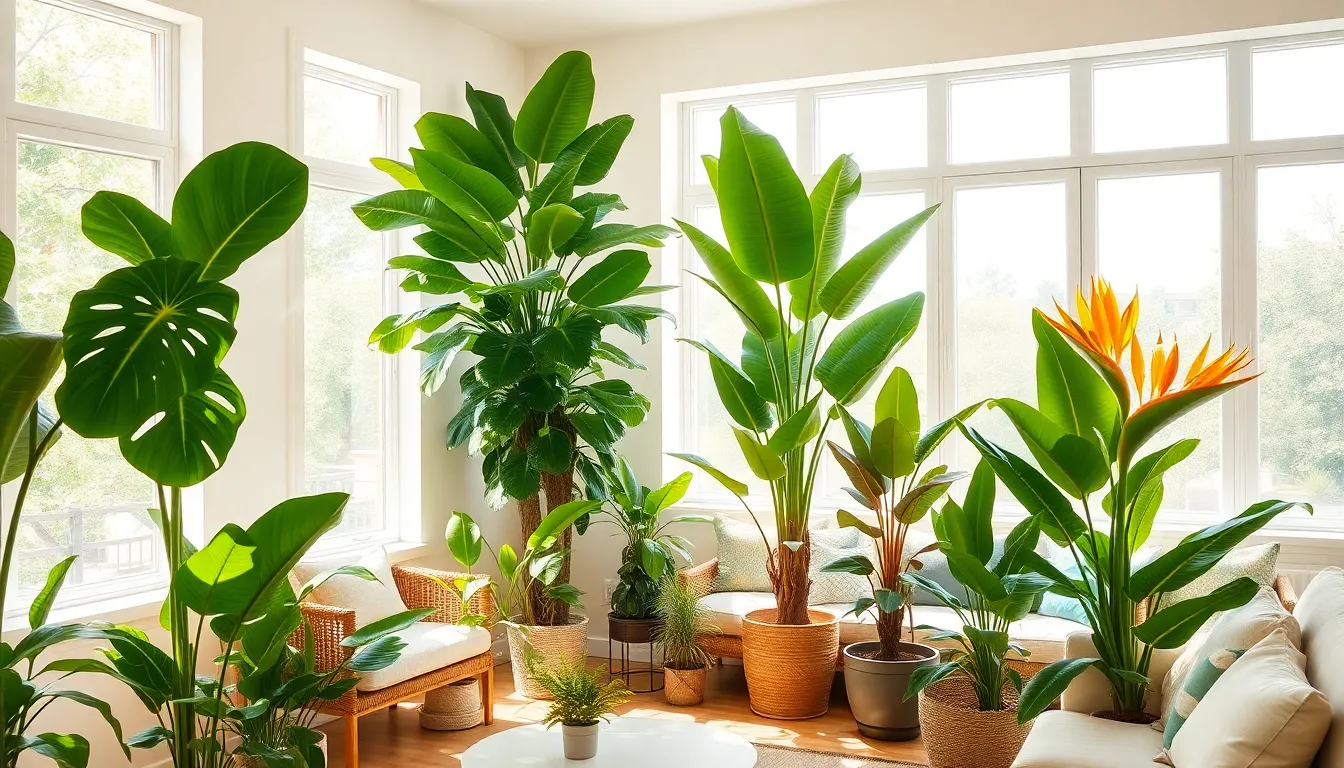
While low light plants excel in dim corners, many houseplants actually crave abundant sunshine to reach their full potential. Bright light varieties showcase stunning foliage and impressive growth when positioned near sunny windows or well lit rooms.
Fiddle Leaf Figs (Ficus lyrata)
Fiddle Leaf Figs stand out with their large, violin shaped leaves that create dramatic focal points in bright indoor spaces. These statement plants prefer bright, indirect sunlight but can tolerate some direct sun exposure throughout the day. We recommend consistent watering schedules while avoiding overwatering, which can damage their root systems. Their impressive height potential makes them perfect centerpiece plants for sunny living rooms, home offices, or entryways where they receive ample natural light.
Rubber Trees (Ficus elastica)
Rubber Trees feature glossy, oversized leaves that range from deep green to rich burgundy depending on the exact variety. Bright light exposure helps maintain their vibrant leaf coloration and promotes healthy growth patterns. These low maintenance plants thrive with well drained soil and moderate watering routines. Direct sunlight enhances their natural beauty while supporting their relatively easy care requirements, making them ideal choices for sunny windowsills or bright corner spaces.
Bird of Paradise (Strelitzia)
Bird of Paradise plants display large, banana like leaves and produce unique, bird shaped flowers when conditions are optimal. Direct sunlight is essential for these tropical beauties to thrive and encourage their distinctive flowering process, though indoor blooming occurs less frequently than outdoor cultivation. Consistent moisture levels and high humidity create ideal growing conditions, though they adapt well to typical indoor environments with proper care. Their exotic appearance transforms sunny rooms into tropical retreats.
Monstera Deliciosa
Monstera Deliciosa earns its “Swiss cheese plant” nickname through distinctive perforated leaves that develop unique patterns as the plant matures. Bright, indirect light promotes optimal growth, though these adaptable plants can handle some direct sun exposure without damage. Fast growing nature combined with regular watering and well drained soil produces impressive results in sunny locations. High humidity levels boost their tropical appeal, making them perfect additions to bright bathrooms, sunrooms, or any space with abundant natural light.
Flowering House Plants That Add Color and Beauty
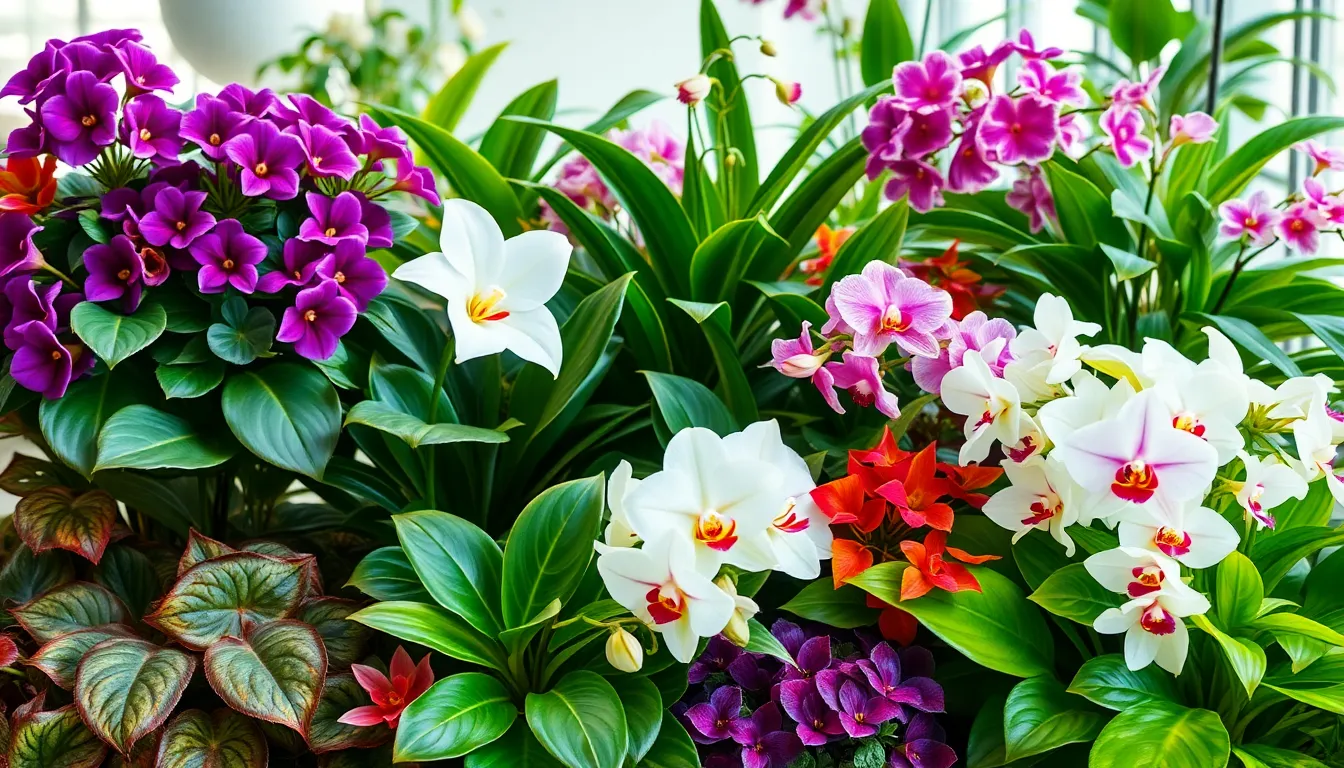
While foliage plants bring greenery indoors, flowering houseplants transform our living spaces with vibrant blooms and continuous color. These beauties offer the perfect combination of attractive leaves and stunning flowers that brighten any room.
African Violets (Saintpaulia)
African violets bring year round blooms to our indoor gardens with their vibrant purple, pink, and white flowers. Their fuzzy, heart shaped leaves create an attractive backdrop for the delicate blossoms that appear multiple times throughout the year. We love these compact plants for their ability to thrive in moderate to bright indirect light while requiring minimal floor space.
These flowering favorites prefer well drained soil with consistent moisture but never soggy conditions. African violets reward proper care with continuous blooming cycles, making them one of the most reliable sources of indoor color. Their compact size makes them perfect for windowsills, shelves, or tabletop displays where we can easily admire their charming flowers.
Peace Lilies (Spathiphyllum)
Peace lilies combine elegant white blooms with glossy green foliage to create stunning indoor displays. Their distinctive white spathes rise gracefully above the leaves, resembling sophisticated flowers that last for weeks. We appreciate these plants for their tolerance of low light conditions, making them excellent choices for darker corners of our homes.
Beyond their beauty, peace lilies actively purify our indoor air while adding natural elegance to any space. These adaptable plants signal their watering needs by drooping slightly, making care straightforward even for beginners. Peace lilies bloom periodically throughout the year when provided with proper care and occasional feeding.
Orchids (Orchidaceae)
Orchids deliver exotic beauty with their intricate, long lasting blooms that can grace our homes for months. Phalaenopsis and Dendrobium varieties are particularly well suited for indoor growing, producing stunning flowers in colors ranging from pure white to deep purple. We find these sophisticated plants surprisingly manageable when their exact needs for indirect light and high humidity are met.
Their exotic appearance creates instant focal points in our living spaces, while their lengthy blooming periods provide exceptional value. Orchids require well drained growing media rather than traditional potting soil, typically thriving in bark based mixes. These remarkable plants can rebloom annually with proper care, making them worthwhile long term additions to our indoor gardens.
Begonias
Begonias offer incredible diversity with their variety of leaf shapes, flower colors, and growth habits that suit different indoor locations. Their blooms appear in shades of white, pink, red, and orange, often contrasting beautifully with their colorful or patterned foliage. We value these versatile plants for their adaptability to bright, indirect light conditions and moderate watering requirements.
These colorful performers bloom continuously during their growing season, providing months of indoor color and interest. Begonias come in upright, trailing, and compact forms, allowing us to choose varieties that fit exact spaces and design needs. Their attractive foliage remains beautiful even between blooming periods, ensuring year round visual appeal in our indoor plant collections.
Trailing and Hanging House Plants for Vertical Gardens

We’ve covered stunning floor and tabletop varieties, but trailing and hanging houseplants offer an entirely different dimension to indoor gardening. These cascading beauties maximize vertical space while creating dramatic focal points that soften architectural lines.
String of Pearls (Senecio rowleyanus)
String of Pearls captivates with its distinctive spherical leaves that resemble tiny beads strung along delicate stems. This succulent trailing plant creates an elegant waterfall effect when displayed in hanging baskets or elevated planters. We recommend placing it in bright light conditions with well-draining soil to maintain its unique bead-like appearance. The plant’s delicate texture adds sophisticated charm to any vertical garden display.
English Ivy (Hedera helix)
English Ivy stands out as a classic trailing vine featuring lobed, often variegated green leaves that create lush cascades. This adaptable plant thrives in low to medium light conditions, making it perfect for various indoor locations. We love how it effectively climbs walls or gracefully hangs from shelves and window boxes. Beyond its aesthetic appeal, English Ivy actively improves indoor air quality while providing year-round greenery.
Spider Plants (Chlorophytum comosum)
Spider Plants charm us with their arching narrow leaves and adorable “spiderettes” that dangle like natural ornaments from the mother plant. These incredibly low-maintenance plants tolerate various light conditions, making them ideal for beginners. We appreciate how they naturally purify indoor air while adding bright, fresh energy to vertical spaces. Their prolific production of baby plants creates an ever-expanding display of cascading greenery.
Heartleaf Philodendron
Heartleaf Philodendron enchants with its glossy, heart-shaped leaves trailing along elegant vines that can grow quite long. This beginner-friendly plant thrives in indirect light and requires minimal care to maintain its dramatic appearance. We find it perfect for hanging pots or shelf displays where its trailing vines can spill downward. The plant’s ability to grow extensively makes it an excellent choice for creating stunning vertical garden effects.
Succulent House Plants for Minimal Maintenance
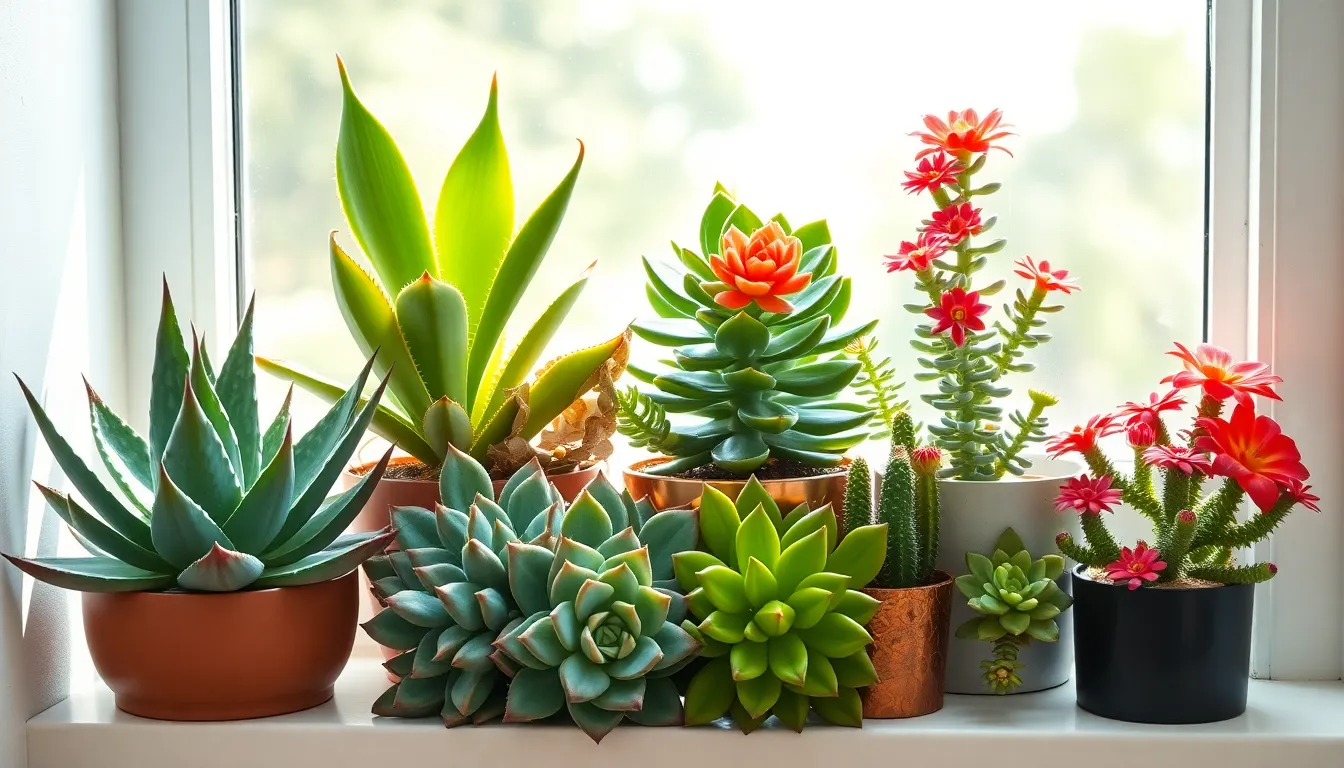
Succulent house plants offer the perfect solution for busy homeowners who want beautiful greenery without constant care. These water-storing champions thrive with minimal attention and can tolerate variations in light conditions.
Aloe Vera
Aloe Vera tops our list as one of the most beginner-friendly succulents you’ll ever encounter. This medicinal powerhouse stores water in its thick, fleshy leaves, allowing it to withstand drought conditions indoors for weeks at a time. Bright, indirect sunlight keeps this versatile plant happy, while its healing gel provides natural skincare benefits right from your windowsill.
Watering requirements couldn’t be simpler – we recommend checking the soil every 2-3 weeks and only watering when it’s completely dry. Overwatering poses the biggest threat to Aloe Vera, so less is definitely more with this resilient succulent.
Jade Plants (Crassula ovata)
Jade Plants earn their reputation as nearly indestructible houseplants through their incredible resilience and slow growth patterns. These hardy succulents feature distinctive thick, oval-shaped leaves that store moisture efficiently, making them perfect for forgetful waterers. Bright light conditions help maintain their vibrant green color and compact shape.
Sparingly water your Jade Plant to prevent root rot, which remains the primary concern with these otherwise bulletproof plants. Many cultures consider Jade Plants symbols of good luck and prosperity, adding positive energy to any indoor space while requiring minimal maintenance efforts.
Echeveria Varieties
Echeveria varieties showcase stunning rosette formations that make them living works of art for your home. This diverse genus offers countless options in terms of shapes, sizes, and colors, from blue-green ‘Blue Atoll’ to burgundy ‘Black Prince’ varieties. Bright light exposure keeps their compact rosette shape and prevents stretching toward light sources.
Deep but infrequent watering works best for Echeveria plants – we suggest thoroughly soaking the soil then allowing it to dry completely between waterings. Their sensitivity to overwatering makes proper drainage essential, but otherwise these architectural beauties remain surprisingly low maintenance.
Christmas Cactus (Schlumbergera)
Christmas Cactus differs significantly from typical desert succulents by preferring higher humidity and indirect light conditions. This unique holiday bloomer produces vibrant flowers in shades of pink, red, white, or purple around the winter season, creating spectacular indoor displays. Moderate watering schedules work best, allowing the topsoil to dry before the next watering session.
Unlike other succulents on our list, Christmas Cactus appreciates slightly more consistent moisture and can tolerate lower light conditions. Their blooming cycle responds to temperature and light changes, making them fascinating plants that connect us to seasonal rhythms indoors.
Air-Purifying House Plants for Healthier Indoor Air
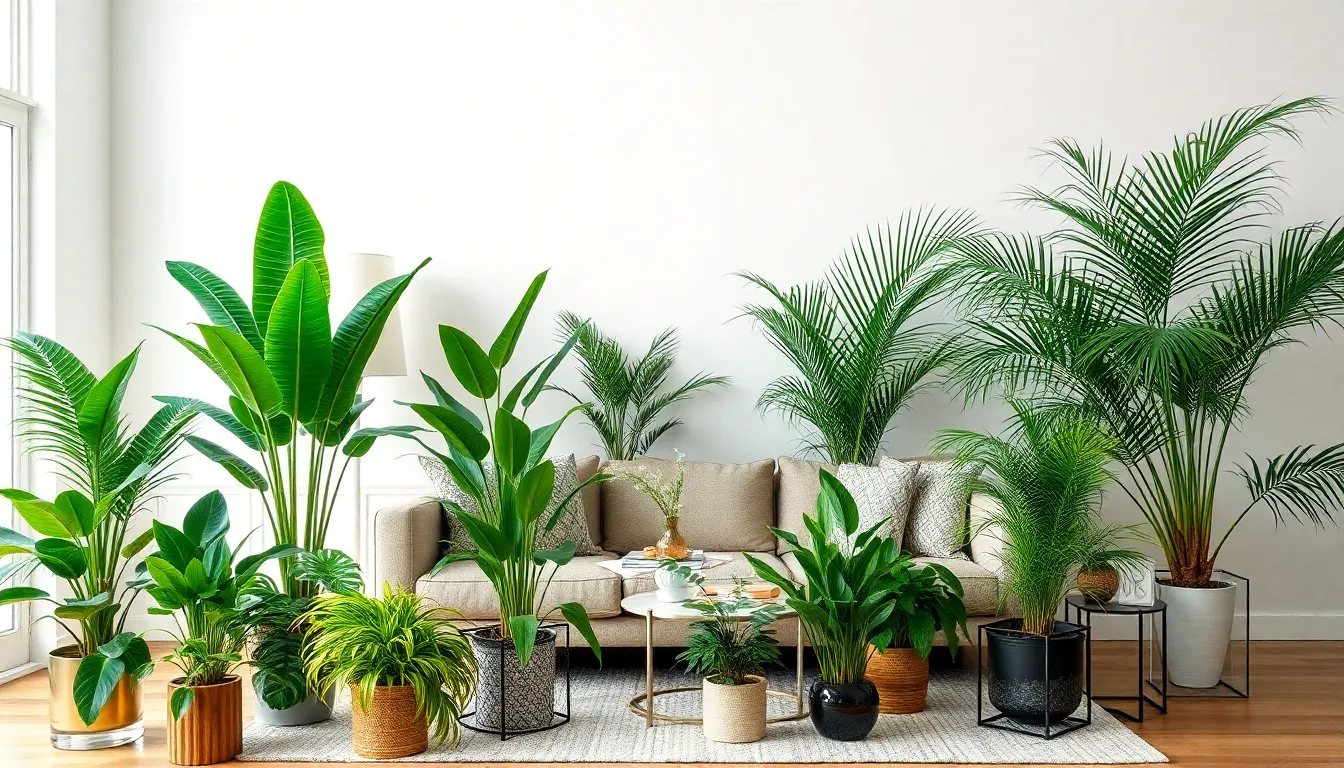
Beyond their aesthetic appeal, certain houseplants excel at removing harmful pollutants like formaldehyde, benzene, and ammonia from our indoor air. NASA studies have identified these exact varieties as particularly effective air purifiers for creating healthier home environments.
Boston Ferns (Nephrolepis exaltata)
Boston Ferns stand out as exceptional air purifiers that naturally humidify our indoor spaces while filtering toxins like formaldehyde. These lush, feathery plants thrive in indirect light and high humidity conditions, making bathrooms and kitchens their ideal homes. Their dense foliage traps airborne pollutants through both their leaves and root systems, creating cleaner air throughout our living spaces. We particularly appreciate how these ferns add a classic, elegant touch to any room while working tirelessly to improve our indoor air quality.
Dracaena Varieties
Dracaena plants cover many tropical varieties, including Dracaena marginata and Dracaena fragrans, all recognized by NASA for their superior air cleaning abilities. These versatile plants effectively remove benzene, formaldehyde, and trichloroethylene from our indoor air, tackling multiple pollutants simultaneously. Their tolerance for low light conditions makes them perfect for darker corners of our homes where other plants might struggle. We find their striking foliage patterns and relatively easy care requirements make them excellent choices for both novice and experienced plant parents.
Bamboo Palm (Chamaedorea seifrizii)
Bamboo Palm excels at filtering benzene and formaldehyde while adding much needed moisture to our dry indoor air. This tropical beauty thrives in low light locations, making it perfect for offices and rooms with limited natural sunlight. Its ability to reduce airborne dust particles creates a cleaner breathing environment for our families. We love how this palm brings a vacation like atmosphere to our homes while quietly working to purify the air we breathe daily.
Areca Palm (Dypsis lutescens)
Areca Palm functions as both a top tier air purifier and natural humidifier, removing formaldehyde and xylene from our indoor environments. This stunning palm requires bright, indirect light and consistent watering to maintain its air cleaning properties at peak performance. Its graceful, arching fronds create an impressive focal point while continuously filtering harmful toxins from our home’s atmosphere. We recommend this palm for larger spaces where its air purifying capabilities can make the most important impact on our indoor air quality.
Large Statement House Plants for Dramatic Impact
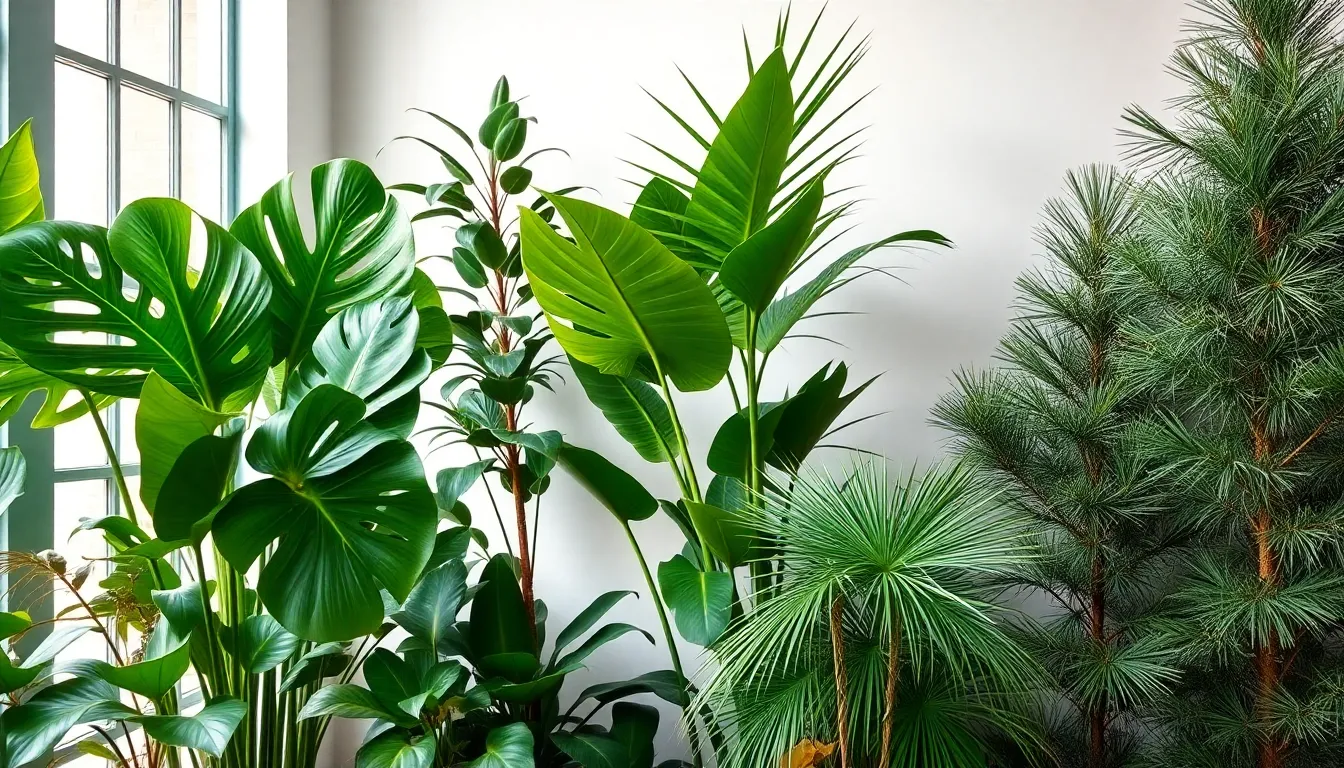
When you’re ready to make a bold statement in your indoor space, these impressive plants deliver the dramatic flair you’re seeking. We’ve selected four exceptional varieties that command attention and transform any room into a stunning botanical showcase.
Monstera Deliciosa
We can’t recommend the Swiss Cheese Plant enough for creating an instant tropical paradise indoors. Monstera Deliciosa captivates with its signature fenestrated leaves that develop those coveted holes and splits as the plant matures. Position yours near East or West-facing windows where it’ll receive medium to bright indirect light, though it can handle a few hours of gentle morning sun.
Watering becomes effortless once you establish a routine of checking every 1-2 weeks, allowing the soil to dry between sessions. Higher humidity levels between 40-60% keep these beauties thriving, so consider adding a humidifier or regular misting to your care routine. Feed with balanced fertilizer every 4-6 weeks during growing season, but skip winter fertilizing entirely.
Temperature preferences lean toward the warm side at 65°F to 75°F, making most homes perfect for these statement makers. Soil should be well-draining and peat-based with perlite and shredded bark mixed in to replicate their natural jungle environment.
Fiddle Leaf Fig Trees
We love how Fiddle Leaf Figs instantly elevate any space with their broad, violin-shaped leaves that create architectural interest. Ficus lyrata demands bright, filtered light but absolutely must be protected from harsh direct sunlight that can scorch those gorgeous leaves.
Consistency in watering keeps these dramatic beauties happy, maintaining slightly moist but never soggy soil conditions. Humidity levels should mirror those of their tropical origins, so consider grouping with other plants or using a humidifier nearby. Their impressive size and striking foliage make them perfect focal points for living rooms, entryways, or any space needing a green centerpiece.
Yucca Plants
We appreciate how Yucca plants bring bold architectural drama with their spiky, sword-like leaves that create striking silhouettes. These hardy statement makers adapt beautifully to various lighting conditions while preferring bright, indirect light for optimal growth.
Drought tolerance makes Yuccas incredibly low maintenance compared to tropical alternatives, requiring thorough soil drying between waterings. Their structural form delivers maximum visual impact with minimal effort, perfect for busy plant parents who want dramatic results. Desert origins mean they’ll forgive occasional neglect while still commanding attention in your space.
Norfolk Island Pine
We find Norfolk Island Pine brings elegant sophistication with its unique conical shape and tiered branching pattern. Araucaria heterophylla prefers bright, indirect light combined with cooler temperatures than most tropical houseplants require.
Regular watering keeps the soil consistently moist without waterlogging, while higher humidity levels support healthy growth of those soft, delicate needles. Texture variety comes naturally with this evergreen’s layered branches that create depth and visual interest in large indoor spaces. Their tree-like presence makes them exceptional conversation starters and natural room dividers.
Conclusion
We’ve explored an incredible variety of houseplants that can transform any indoor space into a thriving green sanctuary. From drought-resistant succulents perfect for busy schedules to air-purifying varieties that enhance our health there’s truly something for every lifestyle and preference.
The beauty of indoor gardening lies in its flexibility. Whether you’re dealing with low-light corners or sun-drenched rooms trailing plants for vertical interest or statement pieces for dramatic impact we can create the perfect plant collection customized to our unique living spaces.
Starting your houseplant journey doesn’t have to be overwhelming. We recommend beginning with one or two varieties that match your lighting conditions and care preferences then gradually expanding your collection as you gain confidence and experience the joy these green companions bring to our homes.
Frequently Asked Questions
What are the benefits of having indoor plants?
Indoor plants offer multiple benefits including enhanced mood, improved home aesthetics, and better air quality. They can transform dark corners into beautiful spaces, add natural beauty to your home, and help purify the air by removing harmful pollutants. Plants also create a more inviting atmosphere and can serve as striking focal points in your interior design.
Which houseplants are best for low-light conditions?
Snake Plants, ZZ Plants, Pothos varieties, and Chinese Evergreens are excellent choices for low-light environments. These resilient plants thrive in dim conditions and require minimal maintenance. Snake Plants are drought-tolerant and air-purifying, while ZZ Plants are nearly indestructible. Pothos are versatile and easy to propagate, and Chinese Evergreens offer stunning foliage patterns.
What houseplants need bright light to thrive?
Fiddle Leaf Figs, Rubber Trees, Bird of Paradise, and Monstera Deliciosa are ideal for sunny spaces. These plants require abundant sunlight to reach their full potential. Fiddle Leaf Figs feature dramatic large leaves, Rubber Trees have glossy foliage with low maintenance needs, Bird of Paradise produces unique flowers, and Monstera Deliciosa grows fast with distinctive perforated leaves.
Which houseplants produce flowers indoors?
African Violets, Peace Lilies, Orchids, and Begonias are excellent flowering houseplants. African Violets bloom year-round with vibrant colors, Peace Lilies produce elegant white blooms and purify air, Orchids offer exotic beauty with long-lasting flowers, and Begonias provide continuous blooms in various colors with diverse leaf shapes.
What are the best trailing or hanging houseplants?
String of Pearls, English Ivy, Spider Plants, and Heartleaf Philodendron are perfect for vertical gardening. String of Pearls features unique bead-like leaves, English Ivy is a classic air-purifying vine, Spider Plants are low-maintenance and produce baby plants, and Heartleaf Philodendron has glossy, heart-shaped leaves that create dramatic focal points.
Which succulents are easiest to care for indoors?
Aloe Vera, Jade Plants, Echeveria varieties, and Christmas Cactus are ideal low-maintenance succulents. Aloe Vera offers drought resistance and healing properties, Jade Plants symbolize good luck and are extremely resilient, Echeveria showcases stunning rosette formations, and Christmas Cactus uniquely blooms in winter while preferring higher humidity than typical succulents.
What houseplants are best for purifying indoor air?
Boston Ferns, Dracaena varieties, Bamboo Palm, and Areca Palm are top air-purifying plants identified by NASA research. Boston Ferns humidify and filter toxins, Dracaena varieties clean air while tolerating low light, Bamboo Palm filters benzene and formaldehyde while adding moisture, and Areca Palm provides excellent air purification and humidification benefits.
Which large houseplants make the biggest visual impact?
Monstera Deliciosa, Fiddle Leaf Fig Trees, Yucca Plants, and Norfolk Island Pine are excellent statement plants. Monstera features impressive fenestrated leaves, Fiddle Leaf Figs have broad violin-shaped foliage, Yucca Plants display spiky sword-like leaves, and Norfolk Island Pine offers an elegant conical shape that creates dramatic focal points in any room.

